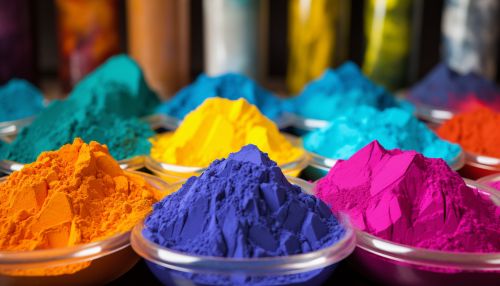Disperse Dye
Introduction
Disperse dye is a type of dye that is primarily used for the coloring of polyester and other synthetic fibers. It is a water-insoluble dye that is finely ground and then dispersed in water during the dyeing process. Disperse dyes are unique in their ability to dye hydrophobic fibers, which do not readily absorb dyes due to their non-polar nature.


History
The development of disperse dyes began in the late 19th century, following the invention of the first synthetic fibers. Early disperse dyes were azo dyes, which were initially used for cellulose acetate and then extended to other synthetic fibers. The need for dyes that could effectively color these new materials led to the development of the disperse dye class.
Chemistry
Disperse dyes are typically azo, anthraquinone, or methine dyes. They are non-ionic and have low water solubility due to the presence of polar substituents such as -NO2, -CN, and halogens. The dye molecules are small, allowing them to penetrate the dense crystalline structure of synthetic fibers.
Dyeing Process
The dyeing process with disperse dyes involves several steps. First, the dye is dispersed in water using a dispersing agent. The fabric is then immersed in the dye bath at a high temperature, allowing the dye to dissolve and penetrate the fibers. The dye molecules then diffuse into the fiber and bond with the polymer chains.
Properties
Disperse dyes have several properties that make them suitable for dyeing synthetic fibers. They have good thermal stability, which allows them to withstand the high temperatures used in the dyeing process. They also have good lightfastness, meaning they are resistant to fading when exposed to light.
Applications
Disperse dyes are primarily used in the textile industry for dyeing synthetic fibers such as polyester, nylon, and acrylic. They are also used in the dyeing of cellulose acetate and other modified cellulose fibers. In addition to textiles, disperse dyes are used in the coloring of plastics and inks.
Environmental Impact
The use of disperse dyes in the textile industry has raised environmental concerns due to the release of dye effluents into water bodies. These effluents can be harmful to aquatic life and can contaminate drinking water sources. Efforts are being made to develop more environmentally friendly disperse dyes and dyeing processes.
